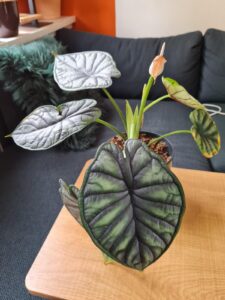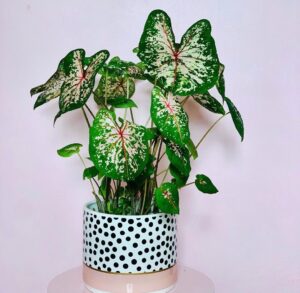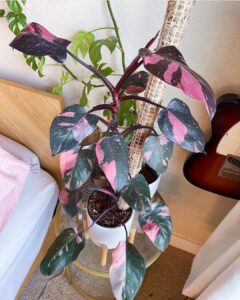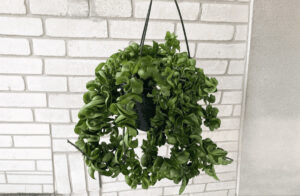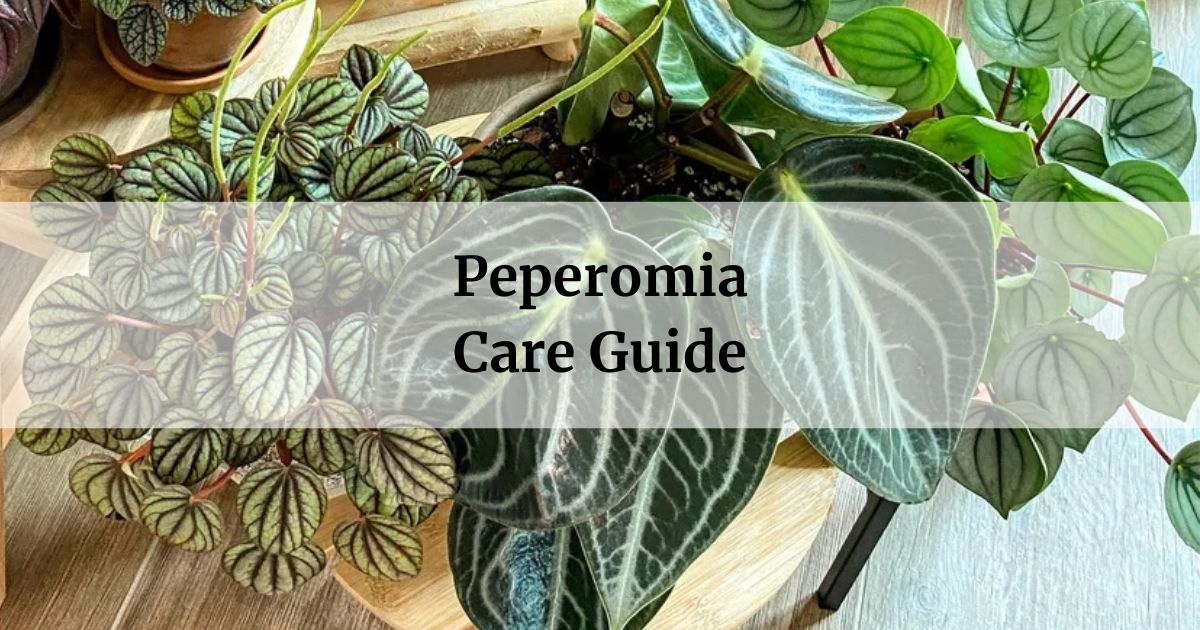
The Peperomia is a captivating houseplant that has won over the hearts of gardeners worldwide. With its diverse foliage and compact growth, this resilient little plant can thrive in a variety of indoor environments. These plants bring joy with their unique character and low-maintenance care requirements.
- Pros
- Diverse and interesting foliage
- Compact and space-saving
- Easy to care for
- Suitable for beginners
- Cons
- Can be sensitive to overwatering
- May be toxic to pets if ingested by pets
In this article
- 1 Appearance of the Peperomia
- 2 Popular Types of Peperomia
- 3 Light Requirements for the Peperomia
- 4 Watering the Peperomia
- 5 Fertilizing the Peperomia
- 6 Potting the Peperomia
- 7 Propagation of Peperomia
- 8 Growth and Development of the Peperomia
- 9 Managing Pests and Diseases for the Peperomia
- 10 Complimentary Plants with your Peperomia
Appearance of the Peperomia
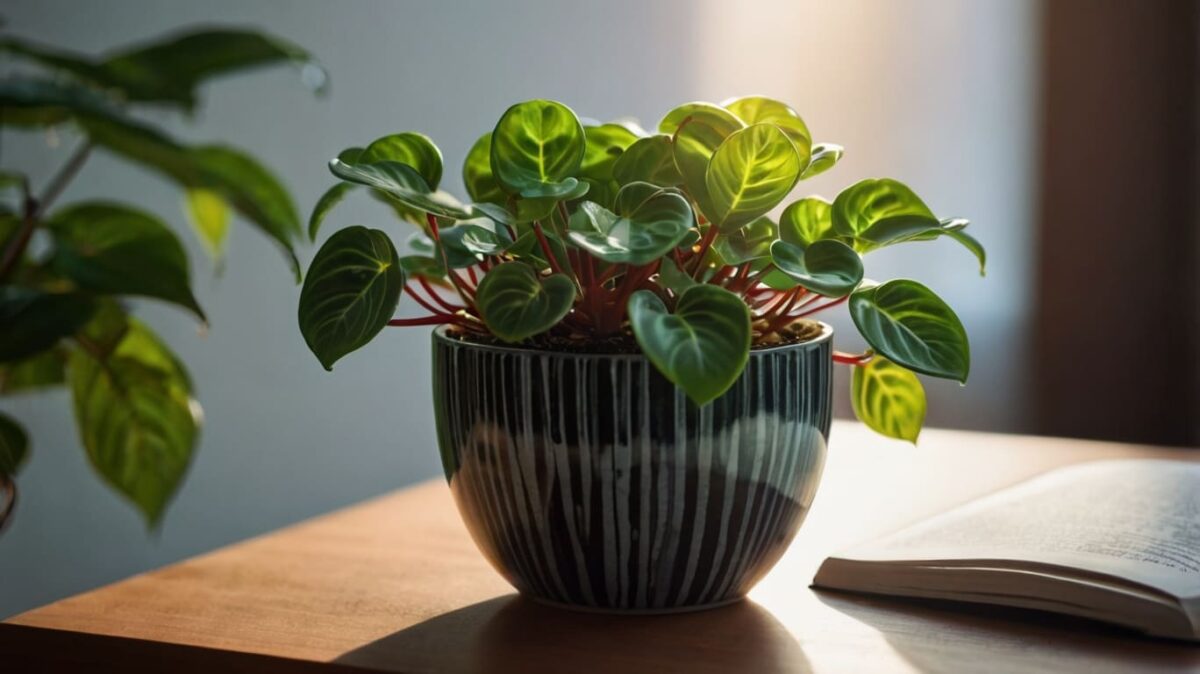
The Peperomia boasts a stunning array of leaf shapes and colors, making it a true standout in any indoor space. Depending on the variety, the leaves can range from round and fleshy to elongated and pointed, with hues spanning from deep green to vibrant red or purple. Some Peperomia species even feature intricate patterns or a succulent-like texture, adding an extra touch of visual interest.
Key Features:
- Compact, bushy growth habit
- Varied leaf shapes and sizes
- Diverse color and pattern options
- Suitable for beginners
- Moderate water requirements
- Bright, indirect light preferred
Great for People who:
Crave a touch of the tropics in their homes and want an easy-to-care-for plant that can add a pop of personality to any room.
Great for these Spaces:
The Peperomia thrives in well-lit rooms with higher ceilings, where its lush foliage can cascade gracefully from shelves or tabletops.
Caring for Peperomia
Regarded as a beginner-friendly plant, the Peperomia is relatively low-maintenance and forgiving, making it an excellent choice for novice plant parents. With the right care, these resilient plants can grow and thrive indoors.
Toxicity Level of Peperomia
The Peperomia plant is generally considered non-toxic to humans but can be mildly toxic to pets if ingested. Symptoms may include gastrointestinal upset or skin irritation. To ensure the safety of your furry friends, it’s best to keep the plant out of reach or consider alternative, pet-friendly options for your indoor garden.
Popular Types of Peperomia
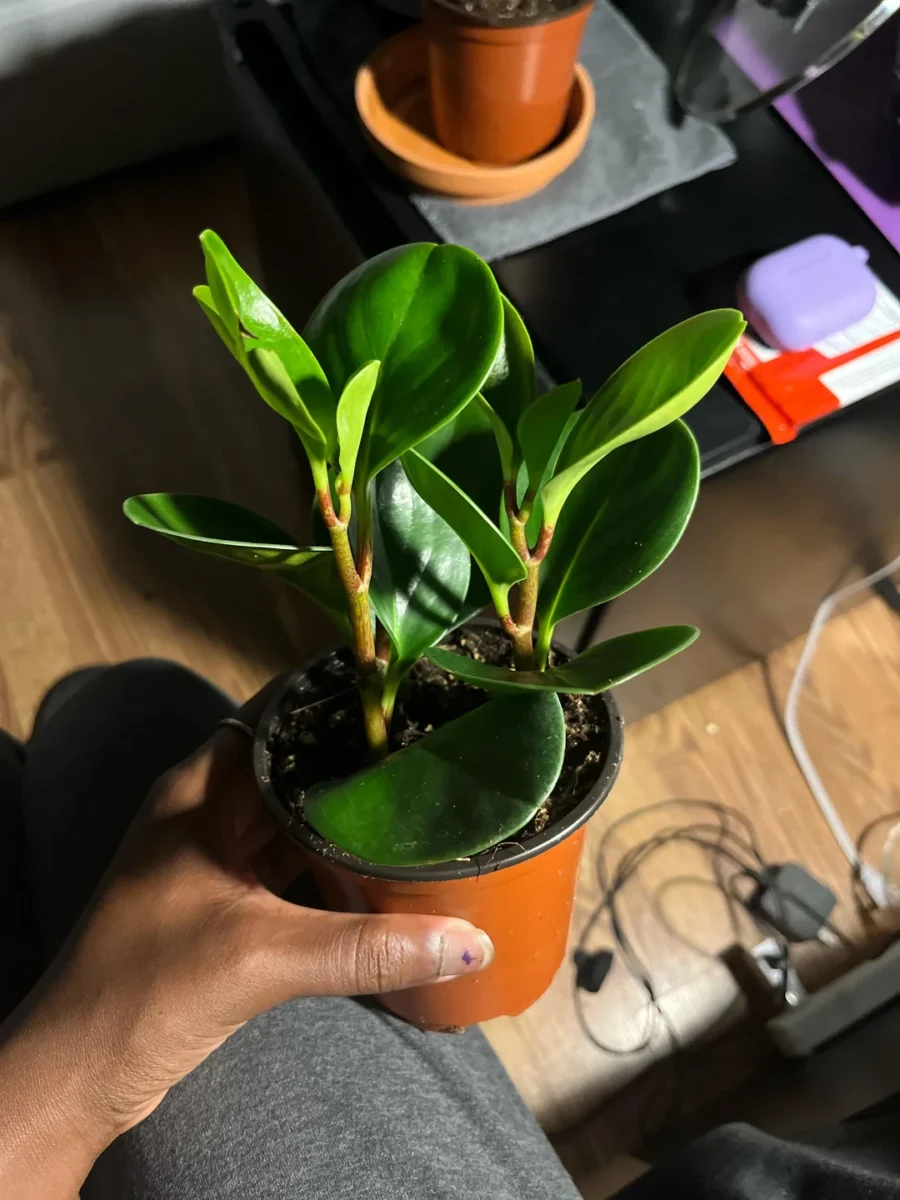
- Peperomia caperata (Ripple Peperomia): This variety is characterized by its heart-shaped, deeply ridged leaves that come in various colors, including green, red, and purple. It typically grows to about 8 inches tall and is well-known for its compact growth habit, making it a favorite among collectors.
- Peperomia argyreia (Watermelon Peperomia): Named for its striking resemblance to watermelon rind, this plant features pale green leaves with dark green stripes. Its unique appearance has made it one of the most recognizable and sought-after varieties.
- Peperomia obtusifolia (Baby Rubber Plant): This species is known for its thick, glossy leaves that can tolerate low light and infrequent watering. It has a stocky appearance and can grow to about a foot tall. Varieties like ‘Albomarginata’ and ‘Golden Gate’ showcase different leaf patterns.
- Peperomia clusiifolia (Rainbow Peperomia): This variety boasts oblong leaves with a vibrant color pattern—green centers surrounded by cream variegation and bright pink edges. It adds a splash of color to any indoor space.
- Peperomia rotundifolia (Trailing Peperomia): Known for its small, rounded leaves on trailing stems, this variety is perfect for hanging baskets or terrariums. It maintains a compact size throughout its growth.
- Peperomia angulata (Beetle Peperomia): Recognized for its small, oval leaves with prominent veins that resemble beetles, this species has a trailing habit and can reach about a foot long.
- Peperomia caperata ‘Rosso’: A unique cultivar of Ripple Peperomia, it features dark green leaves with striking red undersides. This variety stands out due to its elongated leaf shape compared to other P. caperata types.
- Peperomia ‘Frost’: Known for its shimmering silvery-green leaves, this variety is often confused with similar types but is distinguished by its smaller leaf size and lighter coloration.
RELATED: My Top 5 Most Beautiful Houseplants
Light Requirements for the Peperomia
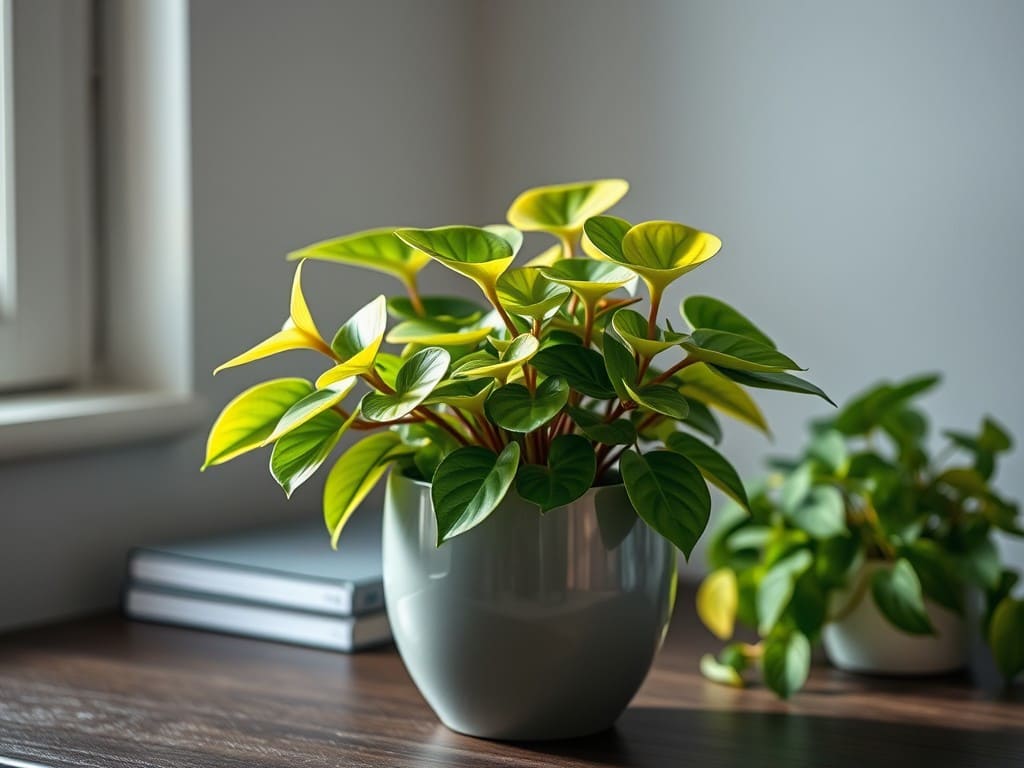
The Peperomia thrives in bright, indirect light. Avoid placing it in direct sunlight, as this can scorch the delicate leaves. If your home doesn’t receive enough natural light, you can supplement with a grow light to ensure your plant gets the necessary illumination.
| Light Conditions | Effect on Peperomia |
|---|---|
| Bright Indirect Light | Promotes optimal growth and vibrant foliage |
| Low Light | Can lead to leggy, stretched-out growth and reduced leaf color |
| Direct Sunlight | May cause scorching and discoloration of the leaves |
Watering the Peperomia
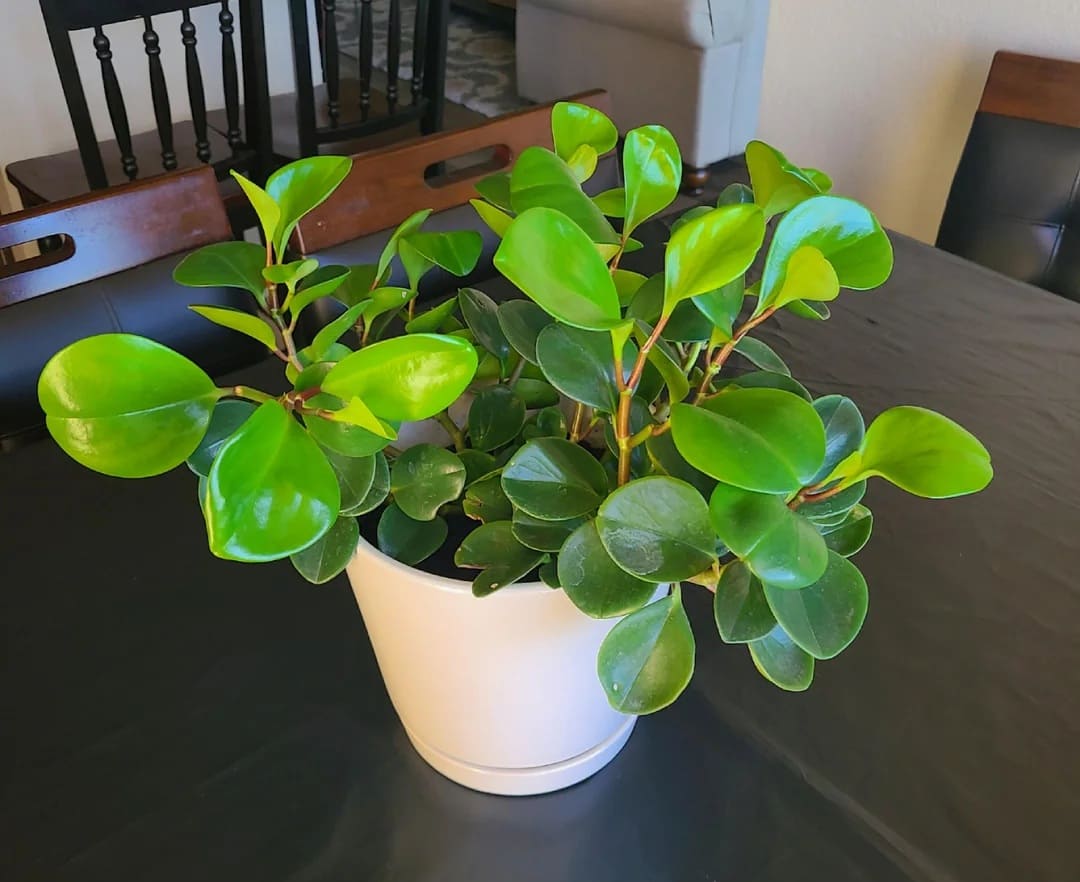
The Peperomia is a relatively thirsty plant, but it’s important to avoid overwatering. The key is to maintain consistently moist (but not soggy) soil, allowing the top inch or two to dry out between waterings. During the winter months, reduce watering frequency to prevent root rot.
- Check the soil moisture by sticking your finger into the potting mix. Water when the top inch or two of soil feels dry.
- Water thoroughly, ensuring the entire root zone is saturated.
- Allow the excess water to drain from the pot, then empty any standing water in the saucer.
- Adjust watering frequency based on your home’s temperature, humidity, and the plant’s growth phase.
Fertilizing the Peperomia

All Purpose Plant Food
- For all Indoor and Outdoor Plants
- Just 7 drops of water every time you water
- All purpose formula that feeds all indoor and outdoor plants
- Excellent for transplanting, repotting and rooting.
- Use fertilizer with Cal/Mag in summer (1 or max 2 times per month)
–
To keep your Peperomia thriving, it’s recommended to fertilize it during the growing season (spring and summer). Use a balanced, water-soluble houseplant fertilizer diluted to half-strength, and apply it every 4-6 weeks.
| Month | Recommended Dosage |
|---|---|
| Spring (March-May) | 1/2 strength fertilizer every 4 weeks |
| Summer (June-August) | 1/2 strength fertilizer every 4 weeks |
| Fall (September-November) | No fertilizer needed |
| Winter (December-February) | No fertilizer needed |
Potting the Peperomia
Peperomia plants prefer a well-draining potting mix that retains some moisture. Use a high-quality potting soil or mix in some perlite or sand to improve drainage. When repotting, choose a container that is only slightly larger than the previous one to avoid overwatering issues.
- Select a pot with adequate drainage holes to prevent waterlogging.
- Fill the bottom of the new pot with a layer of potting mix.
- Gently remove the plant from its current pot and place it in the new container.
- Backfill with more potting mix, taking care not to bury the plant too deeply.
- Water the plant thoroughly after repotting to help it settle into its new home.
Propagation of Peperomia
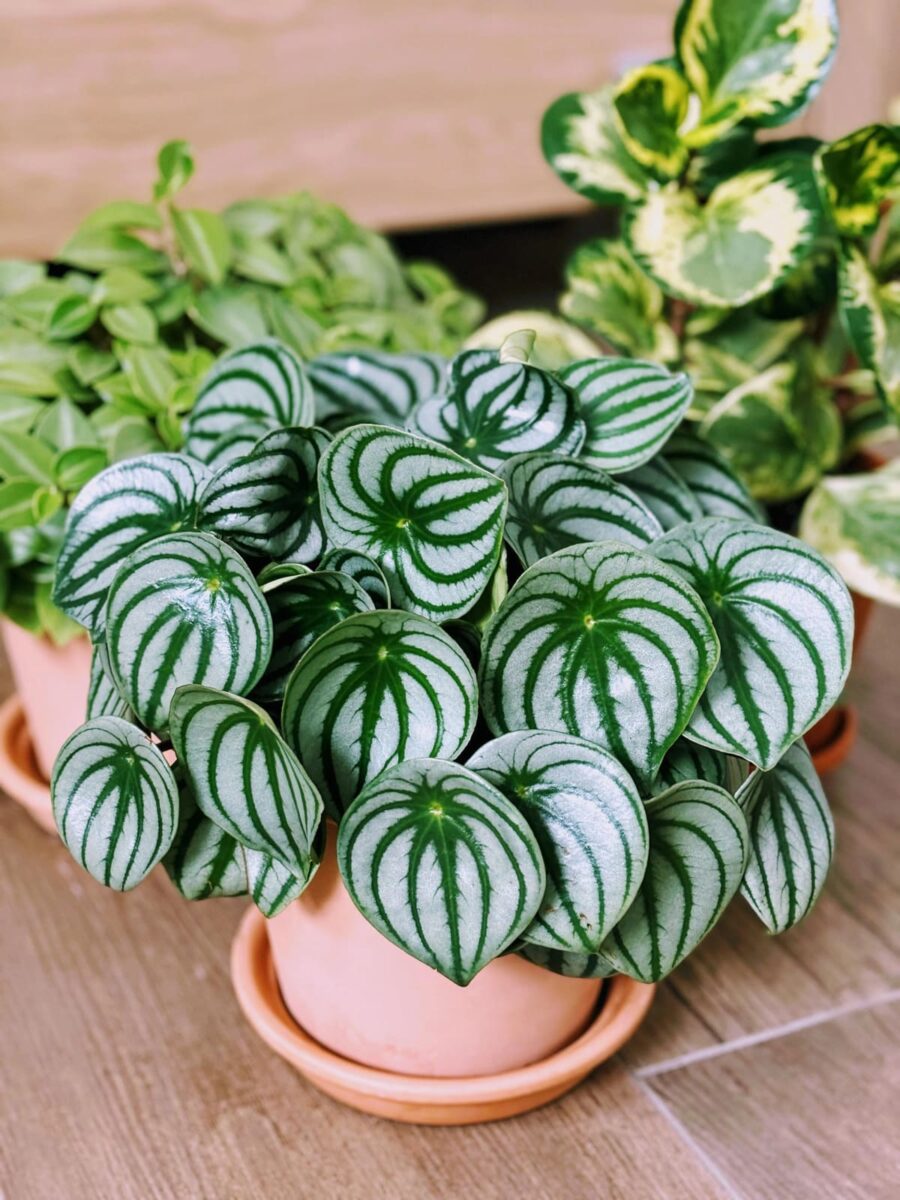
Propagating Peperomia plants is a rewarding process that allows you to create new plants from cuttings. I’ve had great success with this method, and it’s a fantastic way to expand your Peperomia collection or share your love of these plants with friends and family.
- Identify a healthy, mature stem and use a sharp, clean pair of scissors to cut just below a leaf node.
- Allow the cutting to dry for a few hours, then plant it in a well-draining potting mix.
- Water the cutting lightly and place it in a warm, bright, and humid environment.
- Monitor the cutting closely, and mist the soil if it begins to dry out.
- Within a few weeks, you should see new growth, indicating that the cutting has rooted successfully.
Growth and Development of the Peperomia
The Peperomia is a relatively slow-growing plant that thrives in bright, indirect light and moderate humidity levels. In their natural habitat, these plants typically prefer warm, tropical conditions, so aim to recreate a similar environment in your home.
To keep your Peperomia looking its best, it’s important to regularly wipe down the leaves with a damp cloth to remove any dust or debris. This not only enhances the plant’s appearance but also helps improve its ability to photosynthesize and thrive.
Managing Pests and Diseases for the Peperomia
Peperomia plants are generally quite resilient, but they can occasionally fall victim to common houseplant pests and diseases. Be on the lookout for signs of mealybugs, spider mites, or fungal issues like root rot.
If you notice any pests or problems, act quickly to address them. Use a gentle, plant-safe insecticidal soap or neem oil to combat infestations, and ensure you’re not overwatering to prevent fungal diseases.
Complimentary Plants with your Peperomia
Looking to create a harmonious indoor garden around your Peperomia? Consider pairing it with:
- Pothos – Another easy-to-care-for trailing plant that complements the Peperomia’s upright growth.
- Snake Plants – These tough, vertical succulents make a great contrast to the Peperomia’s rounded leaves.
- Philodendrons – Their lush, tropical foliage pairs beautifully with the Peperomia’s unique shapes and colors.
Frequently asked questions
How often should I water my Peperomia?
Water your Peperomia when the top inch or two of soil feels dry. Avoid overwatering, as this can lead to root rot.
Is the Peperomia toxic to pets?
The Peperomia plant is mildly toxic to pets if ingested. It’s best to keep the plant out of reach of curious animals or consider alternative, pet-friendly options.
How much light does a Peperomia need?
Peperomia plants thrive in bright, indirect light. Avoid direct sunlight, as it can scorch the delicate leaves.
The Peperomia is a captivating and low-maintenance houseplant that can easily adapt to a variety of indoor environments. With its diverse foliage and air-purifying properties, it’s no wonder these plants have become such beloved additions to homes and offices around the world.


